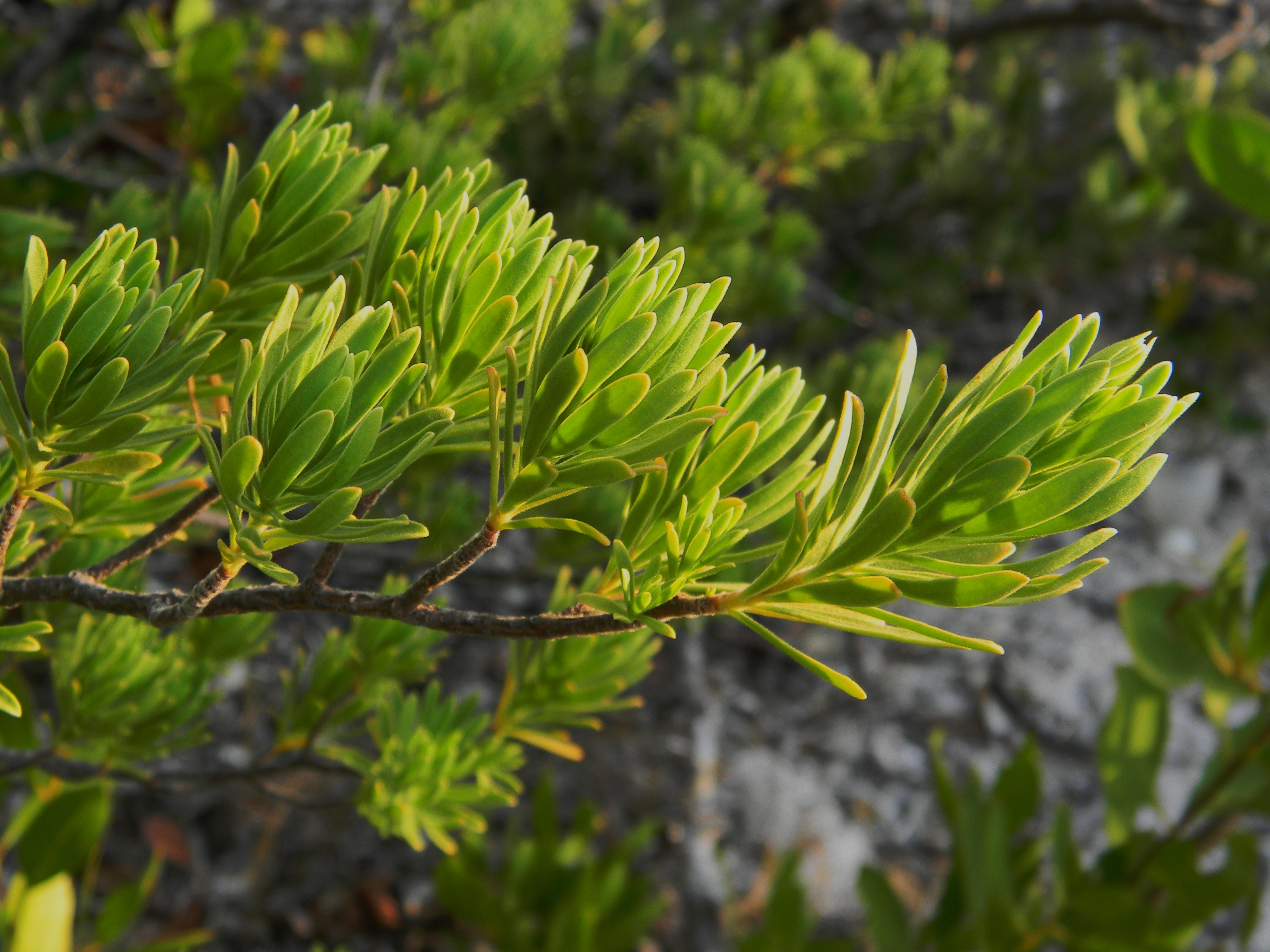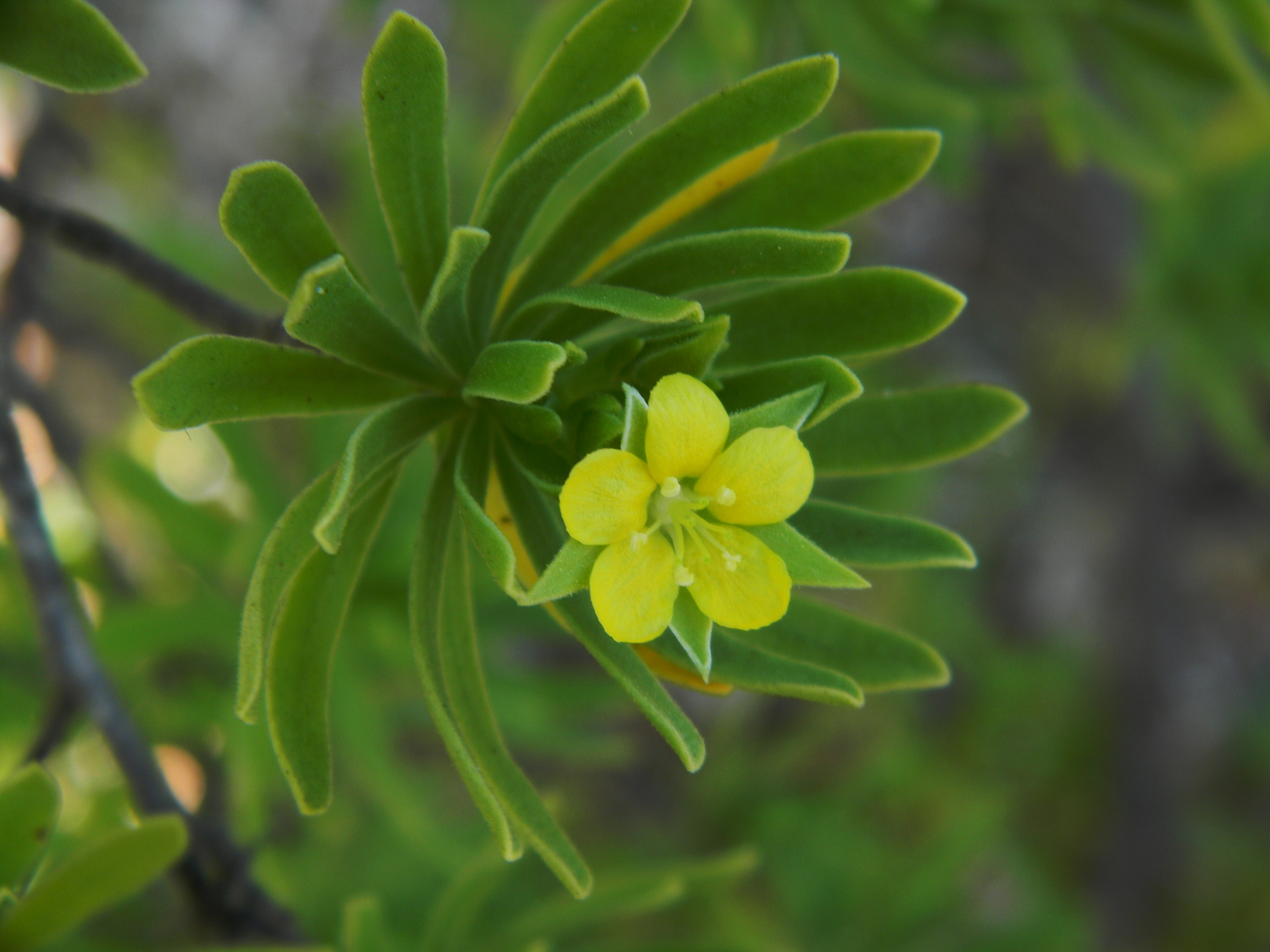Bay Cedar
Suriana maritima
Plant Family: Surianaceae
Leaves: Alternate, simple, linear, narrow, to 5 cm, somewhat fleshy, densely crowded at the tips of the branches; the crushed leaves have a cedar-like aroma.
Bark: Reddish brown, rough.
Flowers: Yellow, small, yet quite attractive, with five petals, found nestled within the leaves at the branch ends; usually winter to spring, but also at other times of the year.
Fruits: Brown nutlets, less than 1 cm in diameter.
Habitat: Beaches and sandy coastal thickets, it is not found inland; highly salt-resistant and drought-tolerant.
Growth Form: Shrub to small tree.
Key Features: The beach or sandy habitat combined with the small linear leaves strongly clustered at the branch ends are diagnostic characteristics, separating Bay Cedar from all other south Florida trees.
Comments: Like the Coconut Palm, the seeds of Bay Cedar (although very much smaller) can germinate on distant beaches after spending long periods in saltwater, resulting in a worldwide distribution on tropical coasts.


